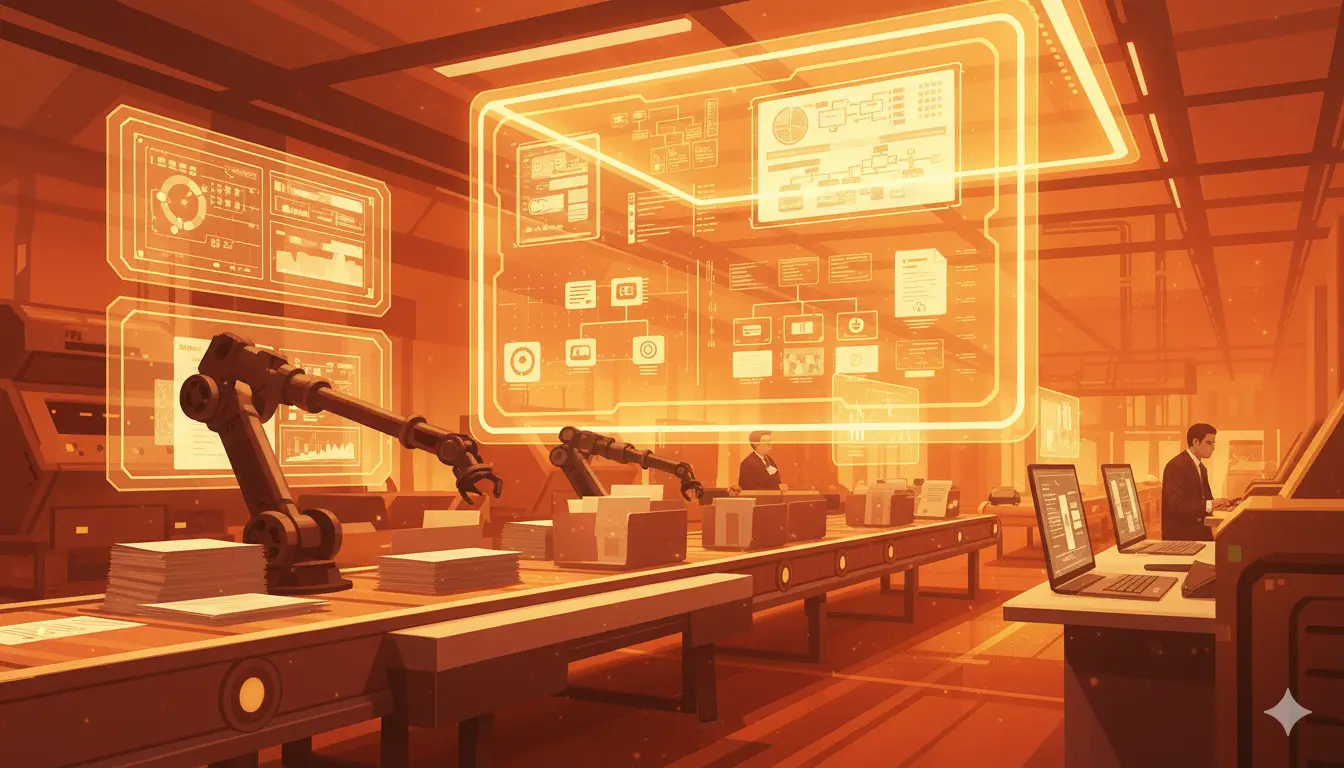AI RFP software is no longer experimental. In 2025, it reliably automates the heavy lifting across RFP intake, drafting, reviews, and submission. Teams ship higher quality responses in less time, reuse the best content from past bids, and collaborate with subject-matter experts without chasing versions. The result is faster cycles, higher win rates, tighter compliance, and less manual work.
Why automation matters now
Artificial intelligence is transforming the way organizations respond to requests for proposals (RFPs). By 2025, AI‑driven RFP software has moved from experimental prototypes to mainstream tools that help teams draft responses quickly, manage knowledge bases, and evaluate supplier bids.
- Markets move faster than manual review can keep up with.
- Buyers expect complete answers, clear proof, and fast turnaround.
- Proposal teams are stretched across tools and silos.
AI RFP automation removes repetitive work, so humans can focus on strategy, positioning, and relationship building.
The rise of AI RFP in procurement and sourcing
Generative AI has entered procurement quickly. Although many executives use tools like ChatGPT for tasks such as email and proposal writing, most organizations have not yet institutionalized those capabilities across their teams.
Despite this gap, a large majority of global chief procurement officers plan to deploy generative AI in some capacity over the next three years — especially for spend analytics and contract management.
Ad-hoc uses include:
- drafting documents
- developing scopes of work
- analyzing data in RFP responses
- crafting negotiation plans
These targeted tasks hint at how AI augments human expertise by producing a first draft, suggesting improvements, or highlighting anomalies for human reviewers.
Semi-automated sourcing tools already turn informal stakeholder input into structured scope documents. When bids arrive, AI evaluates and scores each response, generates comparison summaries, and even drafts contract language and SLAs.
What can be automated in RFP responses?

Drafting and Content Generation
Generative AI helps produce initial responses to RFP questions by pulling relevant information from a company’s knowledge base and past proposals. Instead of starting from a blank document, proposal teams receive pre-filled drafts with suggested paragraphs and recommended attachments.
Because the AI learns from validated answers, it reduces human error and ensures that responses follow brand tone and organizational style guides. However, human reviewers remain essential to ensure accuracy, compliance, and strategic alignment before submission.
Supplier Selection and Scoring
Predictive analytics can evaluate historical RFP data, supplier performance metrics, and pricing models to objectively rank bidders. Scoring engines highlight high-potential suppliers based on past delivery, financial stability, and compliance records, while flagging risk-prone responses for deeper review.
This level of automated scoring accelerates evaluations and fosters fairness by applying consistent, criteria-based scoring across all proposals.
Document Management and Version Control
Handling hundreds of attachments, drafts, and updates can slow down even the most organized teams. AI-powered document control systems automatically track versions, update references, and ensure all collaborators work on the latest content.
Integration with tools like Google Drive and SharePoint centralizes the knowledge library, prevents duplication, and enables real-time collaboration. These systems also enforce role-based permissions, ensuring data security while streamlining access.
Communication and Negotiation
AI enhances vendor communication through centralized portals where suppliers can submit questions and receive context-aware answers instantly. Knowledge base chatbots handle routine queries, escalating complex questions to subject-matter experts only when needed.
During the negotiation phase, AI tools analyze market benchmarks and past deal outcomes to recommend negotiation strategies—suggesting when to offer concessions or maintain position. While humans make the final decisions, AI delivers data-driven insights that shorten negotiation cycles and improve outcomes.
Contract Drafting and Management
Once a supplier is selected, AI supports contract finalization by:
- Extracting key terms and compliance obligations
- Highlighting risk areas
- Suggesting standard legal language
It also automates renewal alerts, performs ongoing compliance checks, and creates a dynamic contract management system that monitors performance and surfaces important obligations.
Challenges and the Human Role
Despite its strengths, AI RFP automation faces several challenges:
- Poor data hygiene (unstructured or outdated content)
- Integration difficulties with legacy systems
- Security concerns and the need for human validation of AI-generated content
- Evolving regulations and ethical standards, particularly in public and regulated sectors
Over-reliance on automation without oversight can result in inaccuracies, bias, or the exclusion of innovative proposals that don’t fit conventional criteria.
That’s why humans remain central in the loop.
Proposal managers and subject-matter experts still play a critical role in:
- Reviewing and refining AI drafts
- Adjusting evaluation and scoring frameworks
- Leading strategic positioning and relationship management
The most effective approach is a hybrid model where AI handles repetitive and analytical tasks, while humans retain control over judgment, differentiation, and compliance oversight.
The Cost of not automating and using AI RFP in 2025
Refusing to automate RFP work in 2025 isn’t just a missed opportunity. It comes with compounding costs that affect revenue, risk exposure, and team performance.

Longer Cycles, Slower Revenue
The most visible impact is on cycle time.
Manual intake, drafting, and review processes extend timelines and force teams to choose between speed and completeness.
Opportunities with tight deadlines are often abandoned or submitted in a weakened state, which directly lowers short-term win rates.
Over time, this creates a reputation for being slow, inconsistent, or error-prone, which erodes trust from both buyers and internal stakeholders.
More Errors, Late Fixes, and Compliance Risk
Buyers expect complete, accurate, and properly formatted responses — delivered fast.
Manual processes often fail to meet these rising standards.
Without automation to enforce templates, validate mandatory fields, and track attachments, last-minute errors appear when stress levels are highest and mistakes are most costly.
Lower Content Quality and Higher Operational Friction
Content quality suffers when knowledge is scattered across file shares, inboxes, and personal notes.
Teams waste time rewriting existing content, contradicting previous commitments, or using outdated claims.
Inconsistent messaging around security, SLAs, or implementation introduces real contractual risk after deal closure.
A lack of a centralized, governed knowledge base means new hires ramp up slowly, while subject-matter experts become bottlenecks by constantly answering repetitive questions.
The Hidden Loss: Organizational Learning
A major invisible cost is the loss of structured learning.
When first drafts are built manually and reviews happen in email threads, there's no clear feedback loop.
No visibility into:
- Which answers are reused
- Which edits improved accuracy
- Which knowledge gaps recur across RFPs
As a result, every new RFP starts nearly from zero, with no cumulative improvement over time.
Competitors Are Already Automating
Organizations that embrace automation are gaining a significant edge.
They respond faster, improve quality week after week, and scale their efforts more efficiently.
They go to market with:
- Stronger compliance
- More consistent scoring
- Better alignment between sales, legal, and delivery
- And a system that learns and improves continuously
Conclusion AI RFP
AI has already begun to rewrite the rules of RFP management.
Adoption rates vary by industry. Advertising and publishing teams are leading the way, while public sector organizations remain cautious.
Procurement leaders plan to invest heavily in generative AI to support spend analytics, document drafting, and contract management. At the same time, buyers are learning to balance the allure of automation with the realities of evolving regulations and ethical considerations.
By 2025, the most effective RFP teams will combine AI-powered efficiency with human judgment.
They will adopt tools that automate drafting, scoring, document control, communication, and contract management, while retaining oversight over strategic decisions and fairness.
Organizations that master this balance can expect shorter cycle times, improved win rates, and stronger supplier relationships in an increasingly competitive market.
FAQ : AI RFP What You Can Automate in 2025
What parts of the RFP intake and qualification process can AI automate in 2025?
AI can read the full pack, extract requirements, identify deal breakers, and generate a qualification brief that highlights scope fit, risks, and missing information. It also suggests a Go or No Go recommendation with the evidence it used, so leaders can make a fast, informed decision. This streamlines early-stage business-processes and helps teams manage their workflow more effectively.
How does AI automate RFP question parsing and answer matching?
Modern systems integrate with your existing CRM or management tools to map each question to your approved knowledge base. They detect duplicates, suggest context-relevant answers, and adjust tone and length to fit the client’s template. This simplifies the content management workflow and reduces errors linked to versioning or inconsistent metadata.
Can AI automate security and compliance questionnaires?
Yes. AI-driven management solutions maintain canonical responses for common security topics like encryption, data retention, and incident response. These cloud-based systems fill recurring forms, match terminology to the buyer’s phrasing, and escalate exceptions to legal or IT security. They support process automation for faster, more compliant responses.
What about automating Excel and portal questionnaires?
AI can analyze spreadsheet structures, understand required fields, and validate input using business rules. It places values in the correct cells, tracks sources with metadata, and flags uncertain entries for human review. For portal submissions, it offers intuitive dashboards to manage and log field-by-field entries, ensuring traceability across the repository.
How far can AI automate first-draft content for technical and commercial sections?
AI generates full first drafts using your approved content library, product documentation, and prior submissions. It respects your brand’s tone, inserts references, and adjusts structure based on the RFP’s requirements. These systems seamlessly integrate into your project management or CRM platforms to deliver scalable, consistent outputs.
Can AI automate bid schedules, task plans, and handoffs?
Yes. AI builds a reverse workflow from the buyer’s timeline, assigns task owners, predicts bottlenecks, and nudges team members when their input is needed. It generates handoff documents for pricing, legal, and delivery to ensure continuous improvement and prevent misalignment between teams. This replaces outdated management systems with agile, automated planning.
What evaluation and scoring tasks are realistic to automate?
AI applies weights to qualitative responses, calculates scores based on consistent criteria, and flags anomalies. These results feed into centralized dashboards, enabling procurement or sales teams to review insights visually. It supports business-process optimization by minimizing subjective evaluation errors.
Which negotiation and redlining activities can AI support?
AI proposes fallback clauses, preferred negotiation positions, and acceptable contract language based on past outcomes. It tracks edits, clarifies what changed and why, and stores everything in a searchable repository. This improves visibility, reduces legal risk, and supports compliant process automation.
Can AI automate compliance checks before submission?
Yes. Before submission, AI verifies that all required sections are complete, attachments are included, and formatting rules are respected. It can block submission until approvals are confirmed, ensuring tight control over your workflow and minimizing human error in critical final stages.
How does AI automate reporting and win-loss learning?
After submission, AI aggregates cycle times, task loads, and reuse rates into visual dashboards. It analyzes win/loss patterns and updates your content or strategy accordingly. This supports continuous improvement and helps teams evolve their management software environment.
What safeguards reduce the risk of incorrect or generic answers?
AI systems include process automation controls like content approval workflows, version tracking, confidence scoring, and answer provenance. Admins can assign roles, enforce management-tools protocols, and ensure only approved content goes live, especially for sensitive topics like pricing, SLAs, or data handling.
How should teams prepare their knowledge base to unlock automation?
Structure your knowledge base by product, security, implementation, and commercial terms. Assign owners, set review frequencies, and replace vague boilerplate with modular content blocks. A well-governed, centralized repository that’s tied into your business-process and workflow is what makes AI automation reliable and scalable.
Where are the limits of automation in AI RFP work?
AI excels at reading, synthesizing, and ensuring consistency. But human teams must still lead on strategy, differentiation, and nuanced client interactions. Treat AI as a streamlining engine for repetitive tasks ,not a replacement for expert judgment. In a mature management system, automation and human oversight work together.
